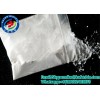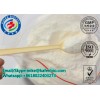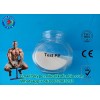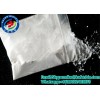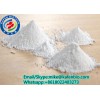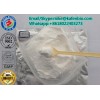Whatsapp:+8618022403273
99% High Purity Prohormones Steroids Raw Powder Estriol CAS 50-27-1
Basic Info.
Estriol
Synonyms: 50-27-1, steroid powder, Estriol
CAS No.: 50-27-1
Formula: C18H24O3
Molecular Weight: 288.39
EINECS: 200-022-2
Density: 1.255 g/cm3
Melting Point: 280-282 ° C(lit. )
Boiling Point: 469 ° C at 760 mmHg
Flash Point: 220.8 ° C
Purity: 99%
Appearance: White crystalline powder
Description:
Estradiol, or more precisely, 17β-estradiol, is a human sex hormone and steroid, and the primary female sex hormone. It is named for and is important in the regulation of the estrous and menstrual female reproductive cycles. Estradiol is essential for the development and maintenance of female reproductive tissues but it also has important effects in many other tissues including bone. While estrogen levels in men are lower compared to women, estrogens have essential functions in men as well. Estradiol is found in most vertebrates as well as many crustaceans, insects, fish, and other animal species.
Estradiol or oestradiol (American or British English usages), derives from estra-, Gk. οστρο? (oistros, literally meaning "verve or inspiration") and -diol, a chemical name and suffix indicating that this form of steroid and sex hormone is a type of alcohol bearing two hydroxyl groups.
Estradiol is produced especially within the follicles of female ovaries, but also in other endocrine (i.e., hormone-producing) and non-endocrine tissues (e.g., including fat, liver, adrenal, breast, and neural tissues). Estradiol is biosynthesized from progesterone (arrived at in two steps from cholesterol, via intermediate pregnenolone). One principle pathway then converts progesterone to its 17-hydroxy-derivative, and then to androstenedione via sequential cytochrome P450-catalyzed oxidations.Action of aromatase on this dione generates estrone, and action of a dehydrogenase on this gives the title compound, 17β-estradiol.
Application:
Hormonal contraception:
A chemical derivative of estradiol, ethinyl estradiol with maximum dosage 200 µg, is a major component of hormonal contraceptive devices. Combined forms of hormonal contraception contain ethinyl estradiol and a progestin, which both contribute to the inhibition of GnRH, LH, and FSH, which accounts for the ability of these birth control methods to prevent ovulation and thus prevent pregnancy. Other types of hormonal birth control contain only progestins and no ethinyl estradiol.
Hormone replacement therapy:
If severe side effects of low levels of estradiol in a woman's blood are experienced (commonly at the beginning of menopause or after oophorectomy), hormone replacement therapy may be prescribed. Such therapy is usually combined with a progestin to reduce the risk of endometrial cancer.
Estrogen therapy may be used in treatment of infertility in women when there is a need to develop sperm-friendly cervical mucus or an appropriate uterine lining. This is often prescribed in combination with clomifene.
Estrogen therapy can also be used to treat advanced prostate cancer, as well as to relieve symptoms of breast cancer.
Not all products are available worldwide. Estradiol is also part of conjugated estrogen preparations, such as Premarin, though it is not the major ingredient. (Premarin consists of a large number of estrogen derivatives. As the name indicates, it comes from pregnant mares' urine.
Hormone replacement therapy in transgender women:
Main article: Hormone replacement therapy (male-to-female)
Estrogen therapy is also used as part of the hormone replacement therapy for trans women. Either oral or transdermal estradiol is used in higher concentrations during initial treatment and transition; estradiol is continued in lower doses to maintain female-level hormones following gender reassignment surgery.
Blocking estrogens:
Inducing a state of hypoestrogenism may be beneficial in certain situations where estrogens are contributing to unwanted effects, e.g., certain forms of breast cancer, gynecomastia, premature closure of epiphyses, and inhibiting feminization in female-to-male transsexual hormone treatment. Estrogen levels can be reduced by inhibiting production using gonadotropin-releasing factor agonists (GnRH agonists) or blocking the aromatase enzyme using an aromatase inhibitor, or with an estrogen receptor antagonist,.


